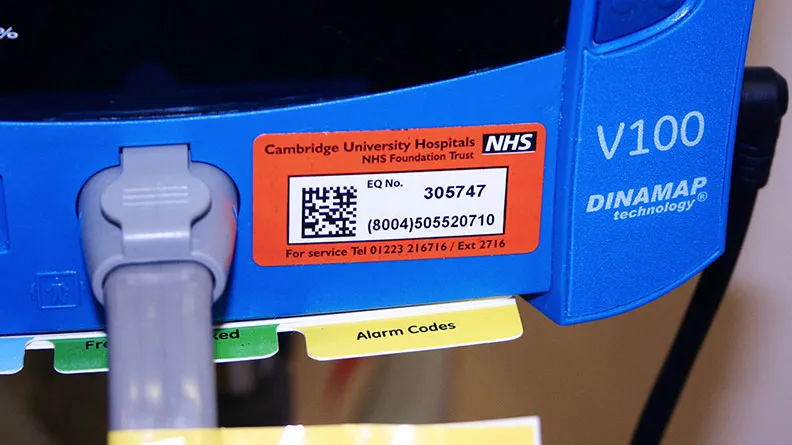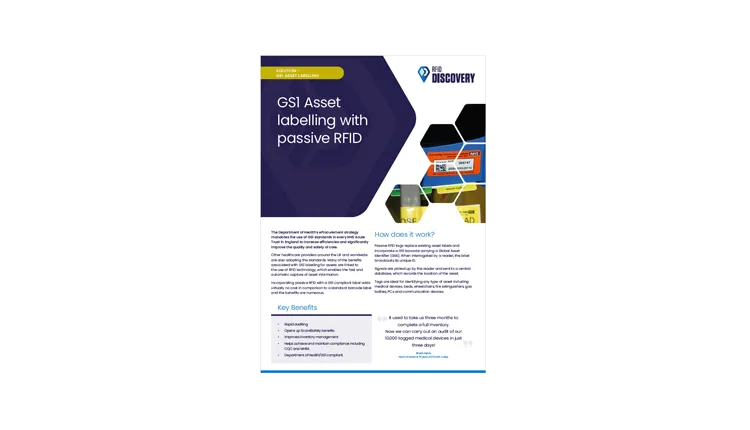GS1 compliant labels

Benefits
Using RFID technology has improved our care and provided a phenomenal return on investment by saving us hundreds of thousands of pounds and thousands of hours of nurses' time.
The use of GS1 standards in hospitals can be used to support your UDI implementation
The U.S. FDA Unique Device Identification (UDI) Rule stipulates a unique device identification system for medical devices. This means that every medical device used in the US has to be marked with a Unique Device Identifier (UDI) to appear on the label and packaging, in both human readable and machine readable format (e.g. barcode). GS1 Standards can be used to support UDI implementations for all types of medical devices.
The RFiD Discovery GS1 Asset Labelling solution supports the implementation of the UDI rule, enabling healthcare providers as well as manufacturers and distributors of medical devices to automate and speed up the data capure process for medical device information. By using RFID technology in addition to barcodes, many public health organizations have already saved thousands of hours of clinical time whilst significantly reducing costs.
When used in conjunction with RFID tags, GS1 numbers and barcodes provide the necessary information and process controls to manage devices more effectively. Linking device barcodes to barcoded patient wristbands makes it easy to record which medical equipment has been used on which patients.
How GS1 Asset Labelling with passive RFID works?

Passive RFID labels
Passive RFID labels replace the existing asset labels, and are fully compliant with GS1 standards, carrying a Global Individual Asset Identifier (GIAI). They are encoded with a unique ID which is linked to a particular asset in the database on registration.
The reading process
Different types of passive RFID readers are used to capture data from the tags and send location information to a central database. A specially designed cart fitted with a UHF RFID reader performs equipment searches as it is pushed around the hospital. A mobile handheld reader is used to audit hospital areas or locate specific equipment and fixed readers can be mounted in key areas with a high number of equipment moves.
Scan4Safety
When a medical device is used on a patient, the GS1 compliant asset label is scanned as well as the patient's wristband. Using GS1 numbers to identify all medical devices as well as locations, staff, patients and products, provides NHS Trusts with reliable information about who did what to whom – when, where and why.
Heading
White paper: The role of active and passive RFID as part of an effective medical device management system
Download our white paper

Find out more about GS1 compliant asset labelling with passive RFID
Download brochure



